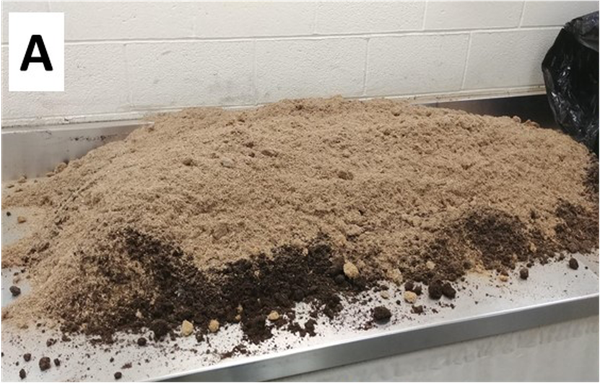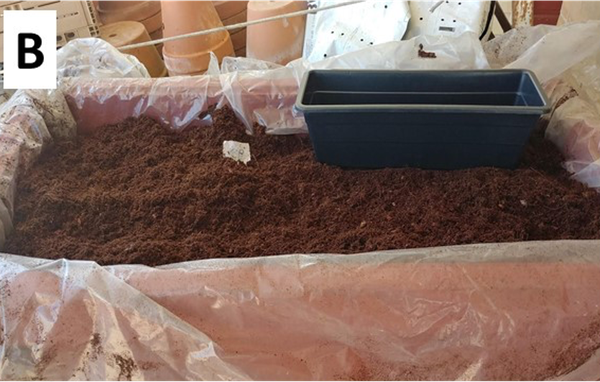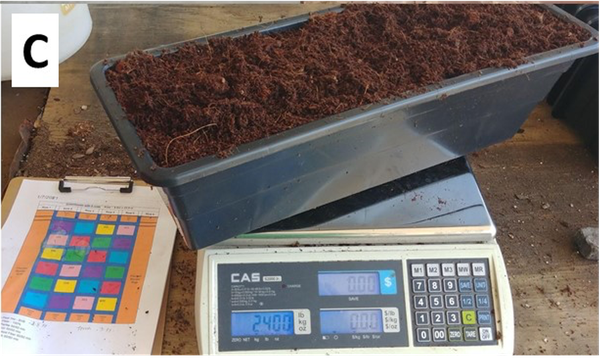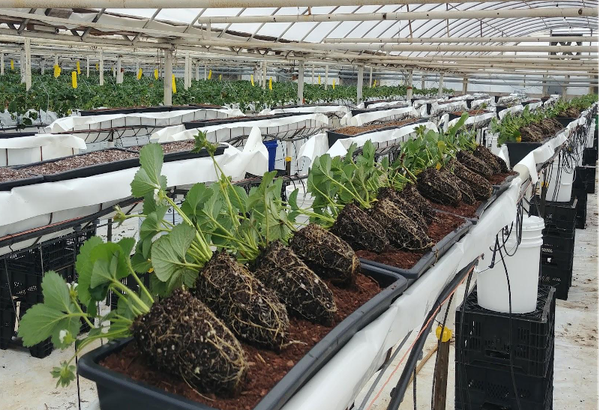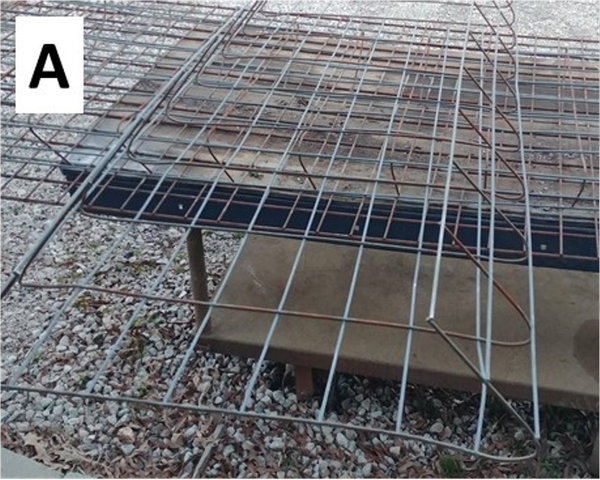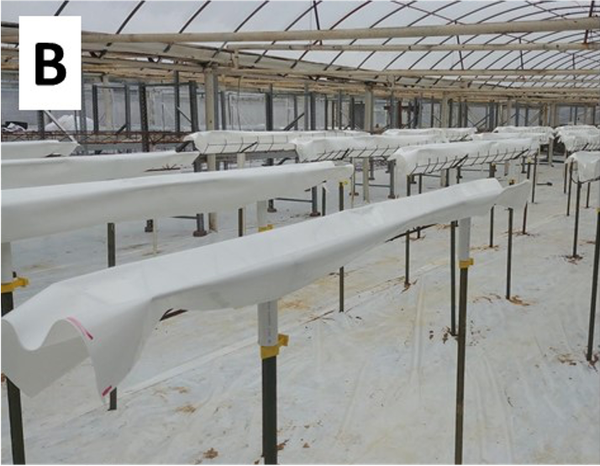Austin M. Wrenn1,2, Brian E. Jackson1 and Mark Hoffmann1*
1North Carolina State University, Department of Horticultural Science, 2721 Founders Drive, Raleigh, NC, 27695.
2Grower and Owner, Wrenn Farms, Zebulon, NC
*corresponding author: Dr. Mark Hoffmann, mark.hoffmann@ncsu.edu
Summary
Soil-less growing practices have opened up new possibilities for many specialty crops, including strawberries. US strawberry growers are facing a number of challenges that threaten the future of the industry. These include increasing labor and production costs, increased competition from imports, short production seasons, new emerging pests and diseases, extreme weather patterns and new government regulations. Soil-less production of greenhouse-grown strawberries has the potential to address some of those issues. While soil-less greenhouse strawberry production has been common for many years in a number of European and Asian countries, it has yet to become commonplace in the US. Reasons are high upfront cost as well as a general lack of technical knowledge, resulting in grower reluctance to make a transition into greenhouse strawberry production. One horticultural key for a successful soil-less strawberry production system is the choice of optimal substrate options. Therefore, the presented study evaluated the impact of six substrate blends on the growth and yield of strawberry (Fragaria x ananassa cv. Albion) in a commercial greenhouse in Eastern North Carolina. Following substrate blends were used: (1) 100% Coco Fiber; (2) 50% Canadian Peat / 50% Perlite; (3) 50% Canadian Peat / 50% Coco coir; (4) 50% Canadian Peat / 50% Wood Fiber; (5) 50% Canadian Peat / 50% Bark; (6) European Peat. Tray plants (250 cc) were grown in a modified tabletop system inside a poly-covered greenhouse with basic climate control infrastructure. The study was conducted in a randomized complete block design during the growing season 2020-2021 and repeated in 2021-2022. Our results show that strawberries grown in 50% Canadian Peat / 50 % Wood Fiber yielded similar high to 100% Coco Fiber and 100% European Peat, both grower standards. Based on the research, strawberry greenhouse production could use more cost effective, local available woodfiber and Canadian peat substrates instead of coconut coir or European peat that are sourced and shipped overseas. This option can be a more cost effective option for growers in the Southeast, considering making a shift to greenhouse strawberry production.
Introduction
Currently, the most prominent method of producing strawberries in the US is through the annual use of raised soil beds covered with plastic, commonly referred to as annual hill plasticulture. Plasticulture offers many advantages to more traditional production methods such as matted row production systems, but it also has many challenges. Plasticulture production relies heavily on the use of soil fumigants to control soilborne plant pathogens, weeds and nematodes. While fumigation can be highly effective, it has potential health and safety as well as environmental concerns if used incorrectly. Fumigation requires specialized equipment, training and licensing of applicators. Additionally, plasticulture systems require high labor requirement for land preparation, planting, frost protection, harvest and cleanup. Plasticulture provides very little protection from rain and frost damage, it requires frequent crop rotation and has a high environmental impact.
One alternative to annual hill plasticulture systems is the use of soil-less growing systems. Soil-less substrates in pots or bags can be replaced year to year, eliminating the need for crop rotation and fumigation. This system is often used in conjunction with greenhouse or tunnel systems for environmental protection, and the crop can be placed at any height for more ergonomic and effective labor usage. Additionally, most of the structural and irrigation components of these systems can be reused for multiple years (10–15+), reducing the long-term cost and environmental impacts. The use of soil-less substrate strawberry growing systems is very popular outside of the US, specifically in Europe.
Two of the most commonly used soil-less substrate components worldwide for strawberry production are coco fiber and peat-based mixes. Both of these substrates must be imported into North America. Coco coir is processed from the husk of coconut shells, predominantly from Sri Lanka and India. Peat-based substrate mixes for strawberries commonly use peat harvested from bogs in Northern Europe in and around the Baltic states. This peat is commonly referred to as “block peat.” This form of peat differs from the Canadian sphagnum peat moss, which is more common in the US. Instead of being ground and vacuumed, block peat is cut into blocks and dried before being processed and mixed with other components. Traditionally, these two substrate types have been readily available and economically feasible for substrate strawberry growers, but a number of recent geopolitical changes threaten the traditional availability. In recent years, significant pressure has come onto the block peat industry due to environmental concerns. These concerns have caused new regulations on block peat harvest and consumption.
Coconut coir has traditionally been produced in lower-income countries which are more prone to conflict and have a lack of infrastructure for rapid expansion. Increases in the demand for coco coir have stressed the supply of coir in recent years, and consistent quality and supply of materials has become an issue. For regions such as North America that are far from the production regions of either coco coir or European block peat, transportation cost can be significant. In addition to the time needed for transport, supply chain disruptions, such as the complications during the COVID-19 pandemic, provide an even greater threat to the supply of substrates.
As a result of these challenges, there has been an increased focus on using locally available and potentially more economically feasible substrate options. Substrates such as bark, wood fibers, Canadian peat moss, and perlite are readily available and presently in common use in other industries, such as the ornamental nursery industry. The downside is that little information is available to assist strawberry growers in making appropriate substrate selections for their operation.
Therefore, this study evaluated the performance of greenhouse-grown strawberries (Fragaria x ananassa cv. Albion) in six substrate blends sourced from different soil-less material. The goal was to assess strawberry production in local source substrate material in comparison to the grower standards (coco coir and European block peat) for the Southeastern US.
Soil-Less Substrate Mixes That Were Investigated in This Study
Performance of the strawberry cultivar ‘Albion’ was investigated in six custom mixed soil-less substrates for two growing scenarios: A Spring planting (‘Experiment 1’) and a Fall planting (‘Experiment 2’). Following soil-less substrates were used:
- (CF) 100% Coco Coir (=grower standard)
- (PP) 50% Canadian Peat / 50% Perlite
- (PC) 50% Canadian Peat / 50% Coco coir;
- (PW) 50% Canadian Peat / 50% Wood Fiber (locally source pine);
- (PB) 50% Canadian Peat / 50% Bark (locally source pine);
- (EP) European Peat mix (BVB)
Premier professional grate Canadian peat moss was used for the 50/50 mixes. Coco Coir was washed and buffered. Perlite was horticultural grade perlite. Substrate raw materials were measured out by cubic feet volume and mixed together manually to create the 50/50 blends. Pulverized dolomitic limestone was added to PB, PW, PC and PP when mixing to bring substrate pH up to ~5.6 before starting the trial. Lime was incorporated into the substrates, uniformly mixed, left to sit overnight, and mixed again before being used. Sixteen 1.64 feet (=0.5 meters) long pots were filled with each substrate and checked by weight to make sure all were equivalent. Containers were filled level to the top of the container without compressing the substrate (Figure 1A, Figure 1B, Figure 1C).
Planting Material and Planting Dates
Strawberry mother plants (tips; Fragaria x ananassa cv. Albion) were received from Norton Creek Farms, Waynesville, NC. Mother were rooted in an indoor nursery at the farm. Daughter plants were then harvested when needed and rooted directly in 21 cell trays (~240 cc cell volume = tray plant) under a separate misting greenhouse at the farm. The rooting process took about 6 weeks. For the first growing period, rooted tray plants were planted on 3/14/21. Plants were removed on 6/23/21 with a growing duration of 102 days (=Experiment 1). For the second period, tray plants were planted on 9/27/21 and plants were removed on 6/12/22 for a growing duration of 259 days (= Experiment 2; Figure 2).
Greenhouse and Experimental Design
Each experiment contained the same substrate treatments (see list above). Each treatment was replicated four times in space in a randomized complete block design. Each experiment had a total of 24 experimental units, with 16 plants per unit. Each unit consisted of four half-meter containers (Bato Plastics), filled with the designated soil-less substrate (Figure 2) and four plants per container.
The trial was conducted inside of a commercial mid-tech multibay plastic covered greenhouse facility in Zebulon, NC. The greenhouse had originally been constructed for greenhouse tomato production and later converted into a greenhouse for strawberry production by the main author of this study. Each greenhouse bay measured 100 feet (30.5 meters) long by 21 feet (6.4 meters) wide. The gutter height of the structure was 8 feet (2.45 meters) (Figure 3A, Figure 3B, Figure 3C).
Gutters
Gutters were developed and custom built by the main author of this study. The design mirrors standard tabletop growing systems commonly used in the European greenhouse strawberry industry. This system included an elevated growing platform for more ergonomic crop care and harvest activities.
Sixteen inch wide sections were cut from expanded metal fencing panels and bent into U shape Gutters. Rebar brackets held the gutters on top of two ~4’ tall posts which had been driven into the ground. In order to allow for the capture of drainage water from each individual unit, rows were split into 8 foot sections and installed on a ~2% slope. Twenty inch wide strips of white plastic were cut out of white greenhouse film (6 mm thickness, AT Films) and fastened over top of the gutter with the edges overlapping slightly. A modified stapler was then used to staple the plastic around the gutter frame to secure it into place (Figure 3).
Irrigation and Fertility
Drainage leachate and fertigate output solution was collected using a funnel and enclosed bucket directly under the low end of the gutter. Buckets were sealed to prevent evaporation of the drainage water and they were cleaned frequently throughout the experiment to reduce the potentials for algae growth.
Plants were irrigated using an automated irrigation controller (Orbit Bhyve). The trial plants followed a similar irrigation schedule to what the grower would normally use for their other plantings. Each 4 plant trough contained two (2) 2 L/H pressure compensated drippers (Jain Irrigation). Irrigation protocols varied through the season as plant demand increased and decreased. Overall irrigation times ranged from 2 minutes 2 times per day in the coldest period to 4 minutes 12 times per day towards the end of the experiment on hot days.
The trial was conducted using the growers existing fertigation system. The same fertility program was used for the trial as the grower was using for their other platings of Albion strawberry plants. Water soluble fertilizers were mixed into an A/B stock solution and injected at each irrigation event using fertilizer injectors (Dosatron) The program was adjusted slightly as needed based on plant appearance and tissue testing results. Approximate targeted fertility program for the fertigation output are shown in Table 1.
| NO3-N | NH4-N | P | K | Mg | Ca | S | Fe | Mn | Zn | B | Cu | Mo | pH** | EC** |
|---|---|---|---|---|---|---|---|---|---|---|---|---|---|---|
|
150 |
9 |
41 |
150 |
35 |
140 |
40 |
2.0 |
1.0 |
0.5 |
0.15 |
0.1 |
0.05 |
5.5 |
1.4 |
* Once plants start fruiting, K concentration was increased to 240 ppm and Ca was reduced to 115 ppm.
**All nutrient concentrations are in parts per million (ppm). EC is given in milli-Siemens (mS).
Data Collection
A number of environmental traits were recorded over the course of the experiments. Initial PAR (Photosynthetic Active Radiation) readings were collected to assess possible shading variation between blocks as well as between units. Temperature and relative humidity were recorded throughout the trials. Drainage water and irrigation feed solution analysis was conducted on a weekly basis. Observations included electroconductivity (EC), pH and volume of solution. Data were collected on the irrigation water supplied to the crop as well as the drainage from the irrigation solution that leached out of the bottom of the growing containers. The percentage of irrigation solution that exited the container as drainage was also collected (DP).
Following plant yield characteristics were recorded weekly: Mkt (marketable yield in grams), Cull (non-marketable fruit yield in grams), Mkt# (marketable fruit number), Cu# (non-marketable fruit number), and AMFW (average marketable fruit weight in grams. Total soluble solids of ripe fruit (BRIX, MACHINE)) and number of runners (R#) were collected every other week.
“Marketable” fruit quality was determined based on what would be acceptable for direct consumer sales of fresh fruit. Marketable fruits were 5g or above in weight, not severely deformed or with any disease or pest damage. A white ring around the top of the fruit, often called “white capping” was acceptable as it is a common characteristic of fruits grown in NC greenhouse production.
Statistical Analysis
All data were analyzed using SAS Statistical Software Suit (SAS Institute, Cary, NC), using a one-way ANOVA (GLM procedure (P=0.05)), followed by a Fisher-LSD (P=0.05) to analyze for significant differences between treatments.
Results
Experiment 1 (Spring Planting, 102 days, 2021)
No significant differences in marketable fruit number, marketable fruit weight (Table 2), TTS, Number of runners or average berry size could be found between treatments. Generally yields were very low in this Experiment. No significant differences were seen in average drainage volume per week or drainage percentage between the different substrates. Differences between treatments were observed in EC and pH readings. PW had a significantly lower average drain EC reading (0.815 dS/m ) compared to the other treatments. EP had a significantly higher average drainage pH (7.46) and PC had a significantly lower pH reading (5.48.).
Experiment 2 (Fall planting, 259 days, 2021-2022)
Cumulative marketable yields for EP averaged 974 grams per plant (2.15 lbs per plant.) PP had the lowest yields at 810 grams per plant (1.79 lbs.) For Marketable number per plant PW & EP had the highest at 40 berries per plant each and PP had the lowest at 34 berries. EP and PW also had the highest cull weights (122.2 & 120.25) as well as the highest cull numbers (10.5 & 10.15 ) PB had the lowest cull weight (94.3) and cull number (6.98.) (Table 3).
No significant differences were found between TTS, average marketable berry size, runner number, drain volume, and drain percentage. PC had the highest EC in drain, and CF had the lowest with 1.19 units. PW had the highest drainage pH at 7.28 and PC had the lowest at 6.5 (Table 3).
Average marketable berry size was similar for all tested substrates with size averaging 20.9 grams (.046 lbs) in rep 1 and 23.9 grams (.053 lbs) in rep 2. Plant tissue readings as well as shoot & crown dry weights taken at the end of each rep did not provide any significant differences between soil-less substrates.
Conclusion
The results of this study suggest that any of the trialed substrate blends can be used to produce a single season berry crop inside a med-tech greenhouse in eastern North Carolina. For short season cropping, soil-less substrate choice does not have an impact on yield performance of ‘Albion’. In the more common fall planting season, strawberries are grown for 200+ days. Our data suggest that ‘Albion’ grown in European Peat significantly outperformed ‘Albion’ grown in a Canadian Peat / Bark mix and a Canadian Peat / Perlite mix. However, ‘Albion’ grown in Canadian Peat / Wood Fiber mixes performed as well as those grown in European Peat, Canadian Peat / Coco Coir or in Coco Coir itself. Our results suggest that Canadian Peat when mixed 50:50 with Wood Fiber might be a valuable and more local alternative to Coco Coir and European Peat.
Publication date: Dec. 1, 2023
N.C. Cooperative Extension prohibits discrimination and harassment regardless of age, color, disability, family and marital status, gender identity, national origin, political beliefs, race, religion, sex (including pregnancy), sexual orientation and veteran status.

